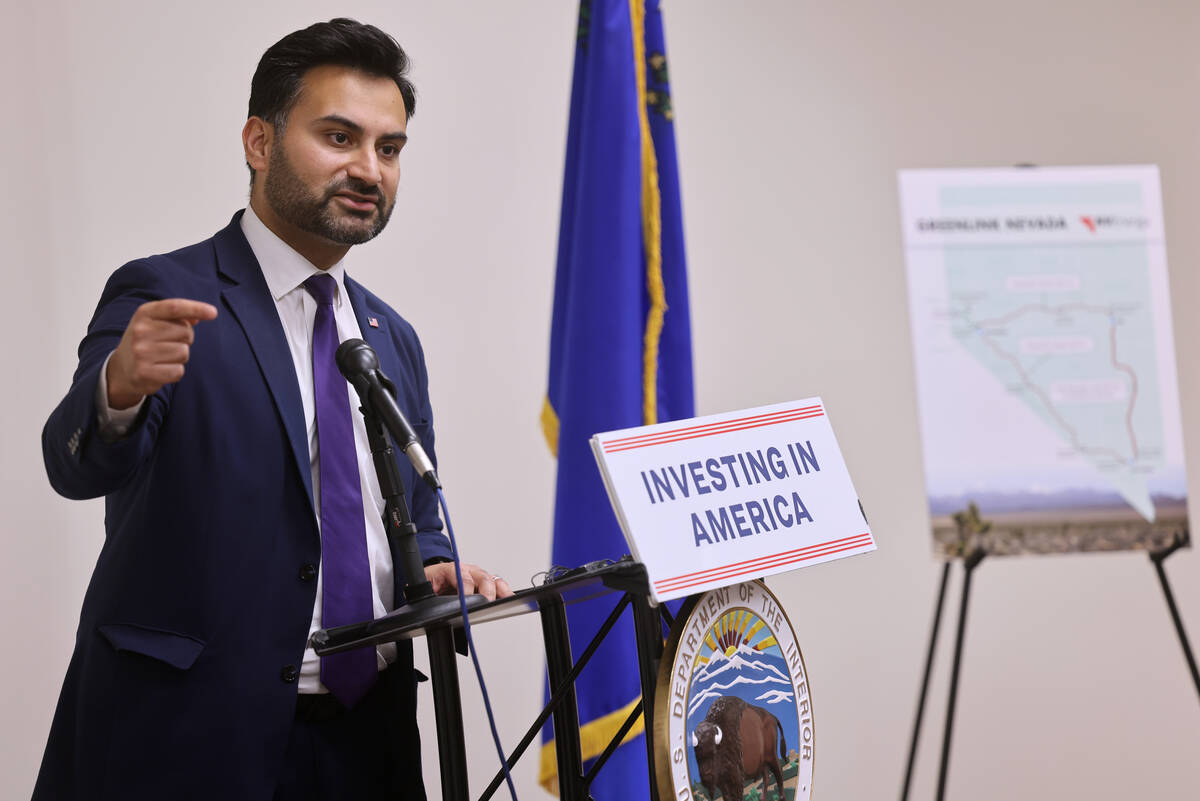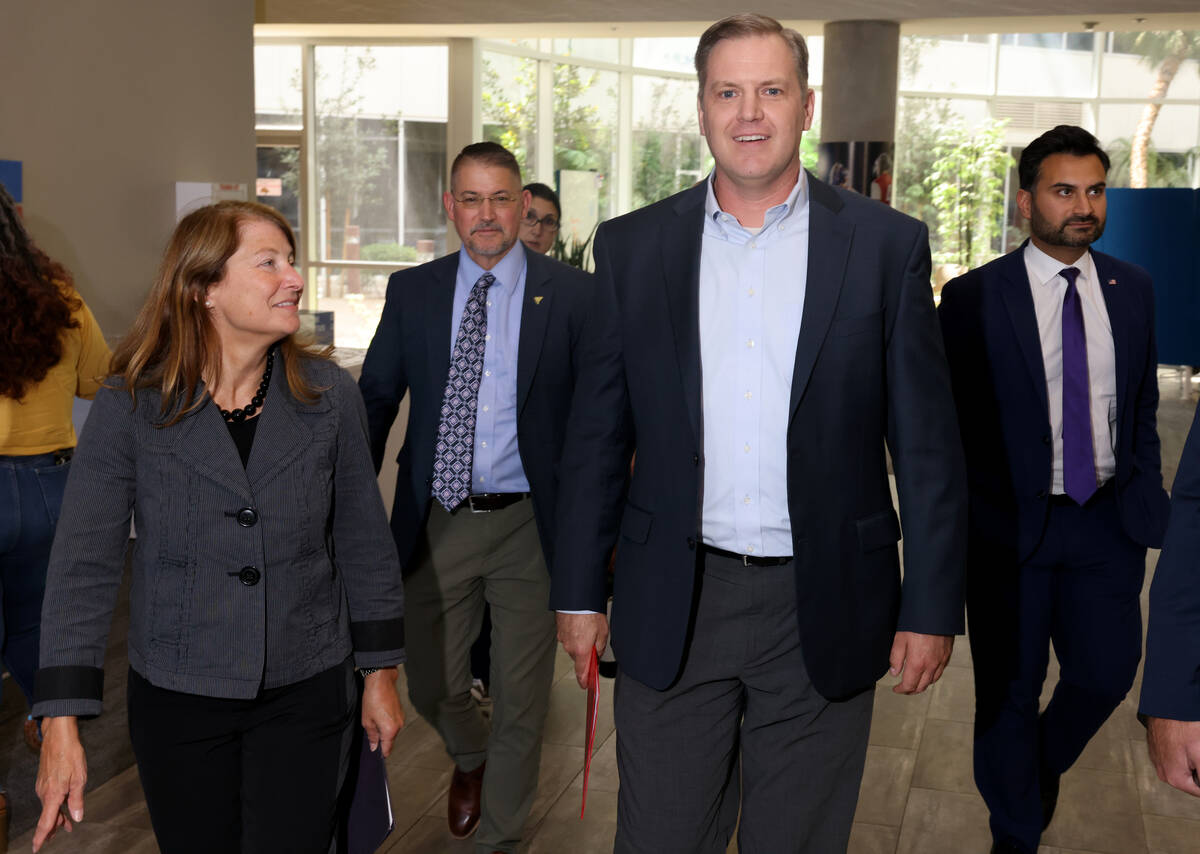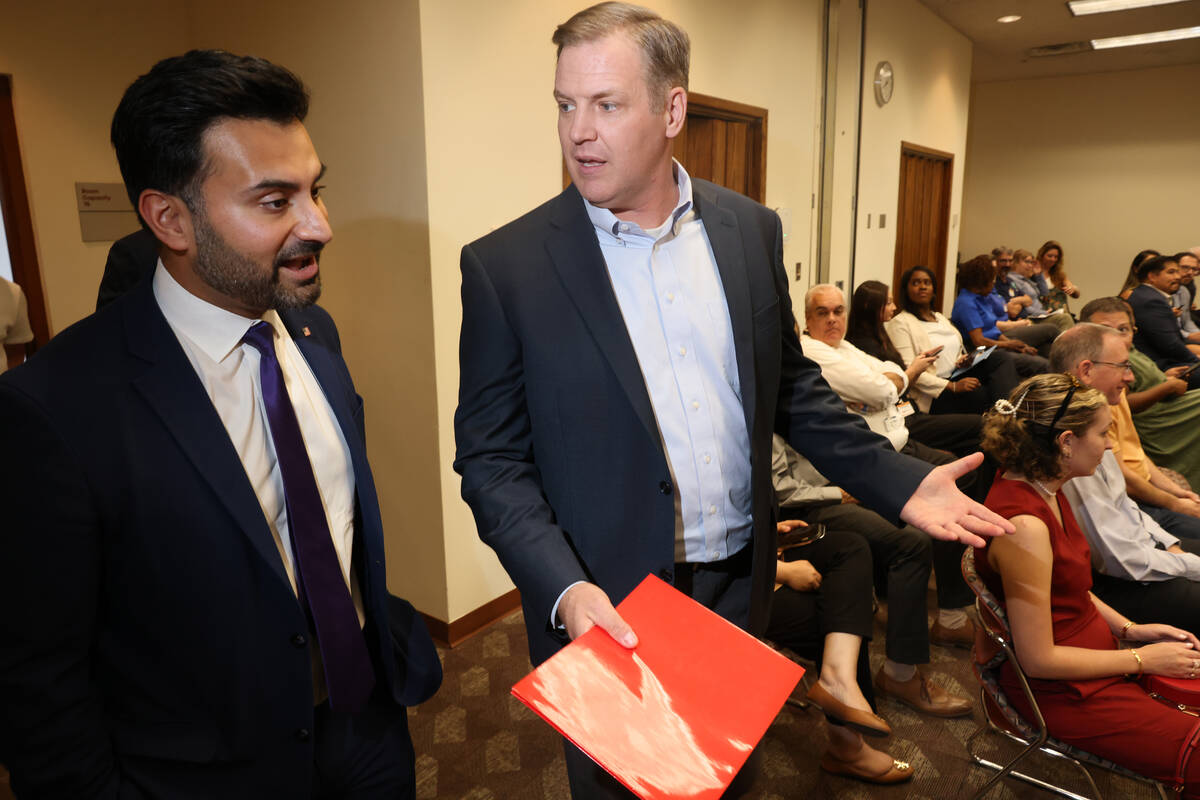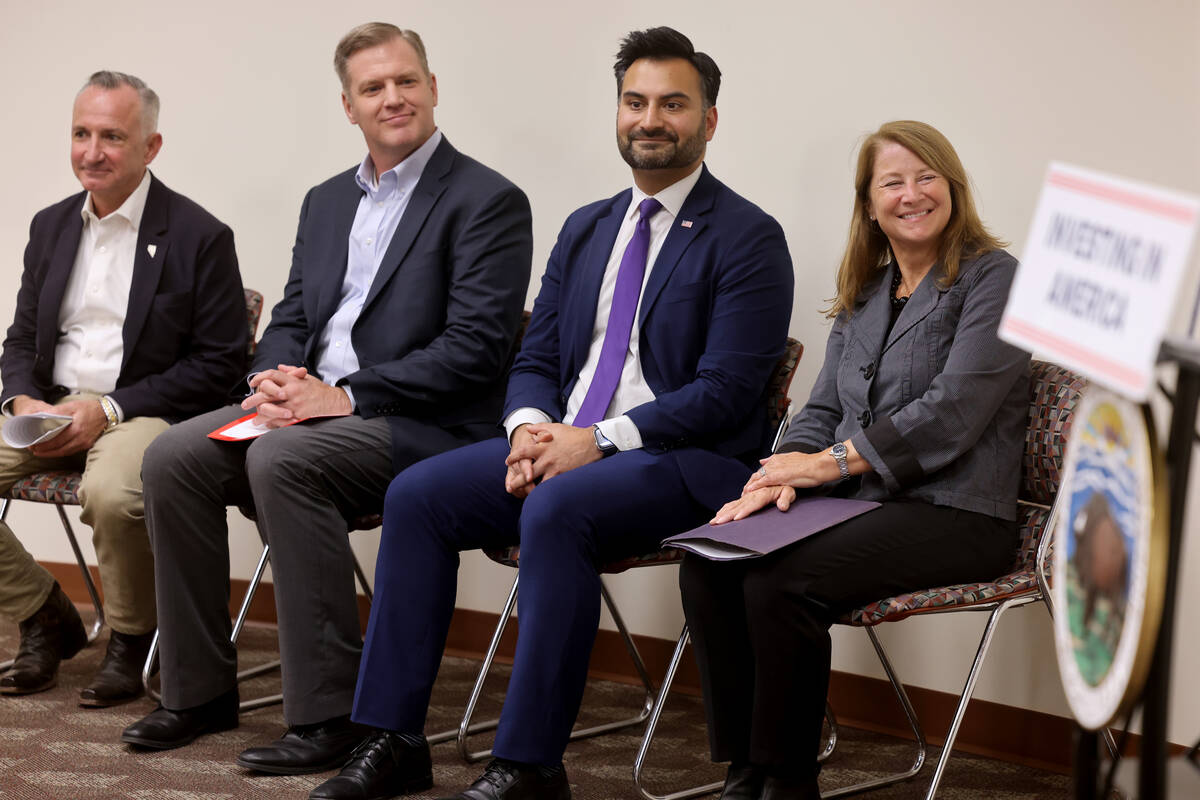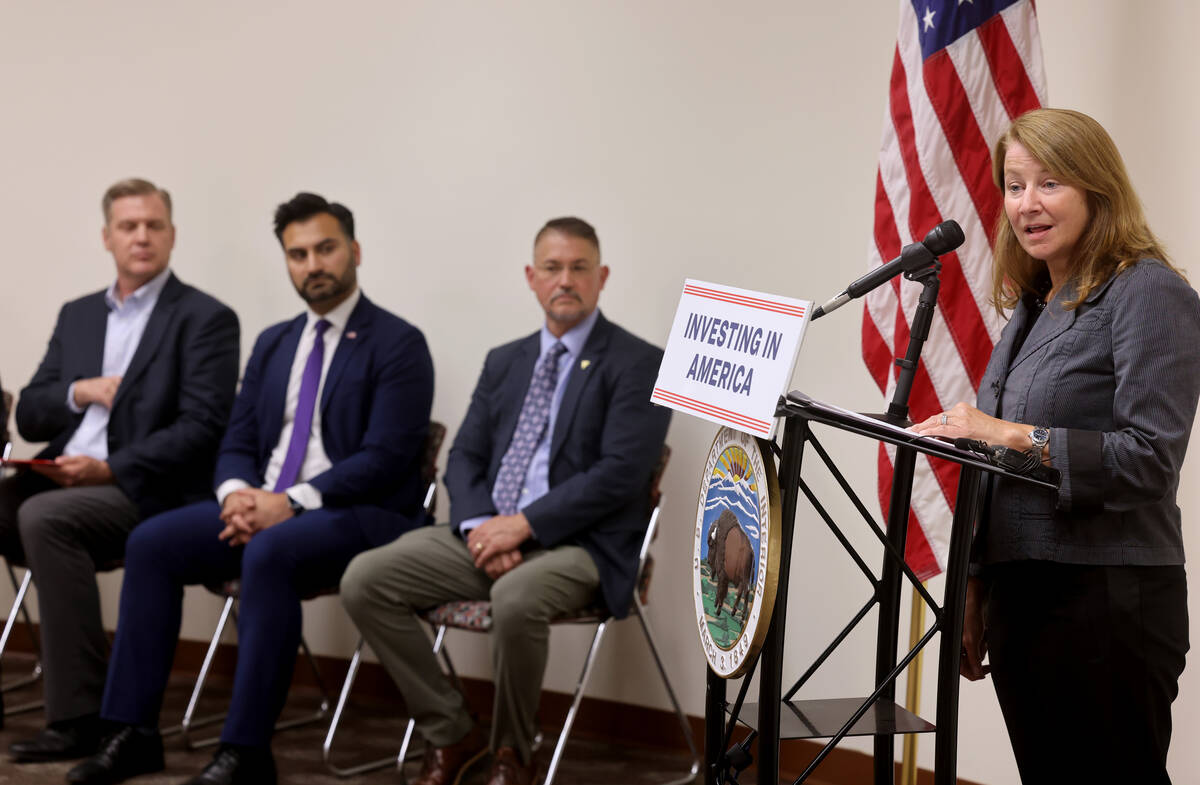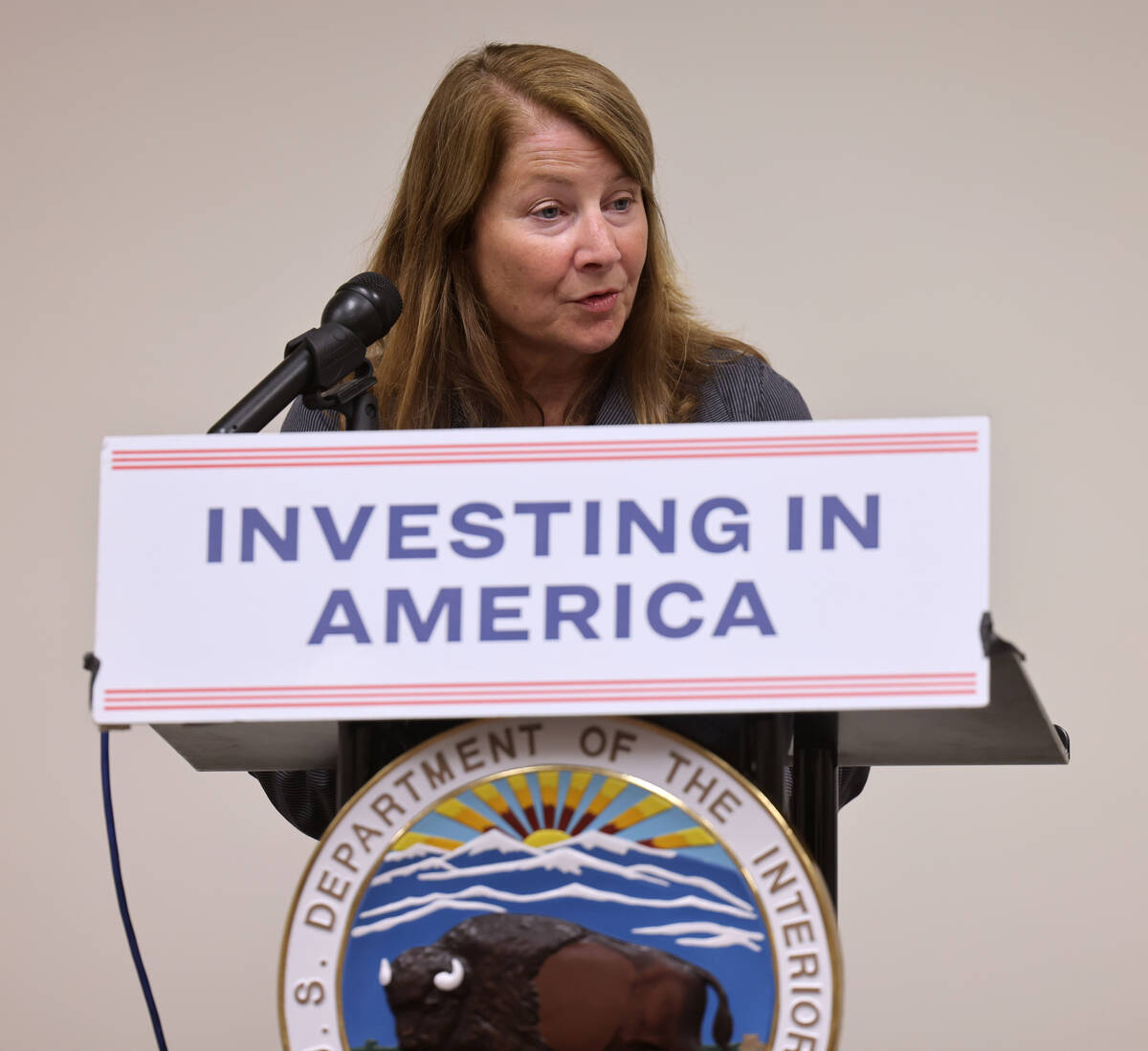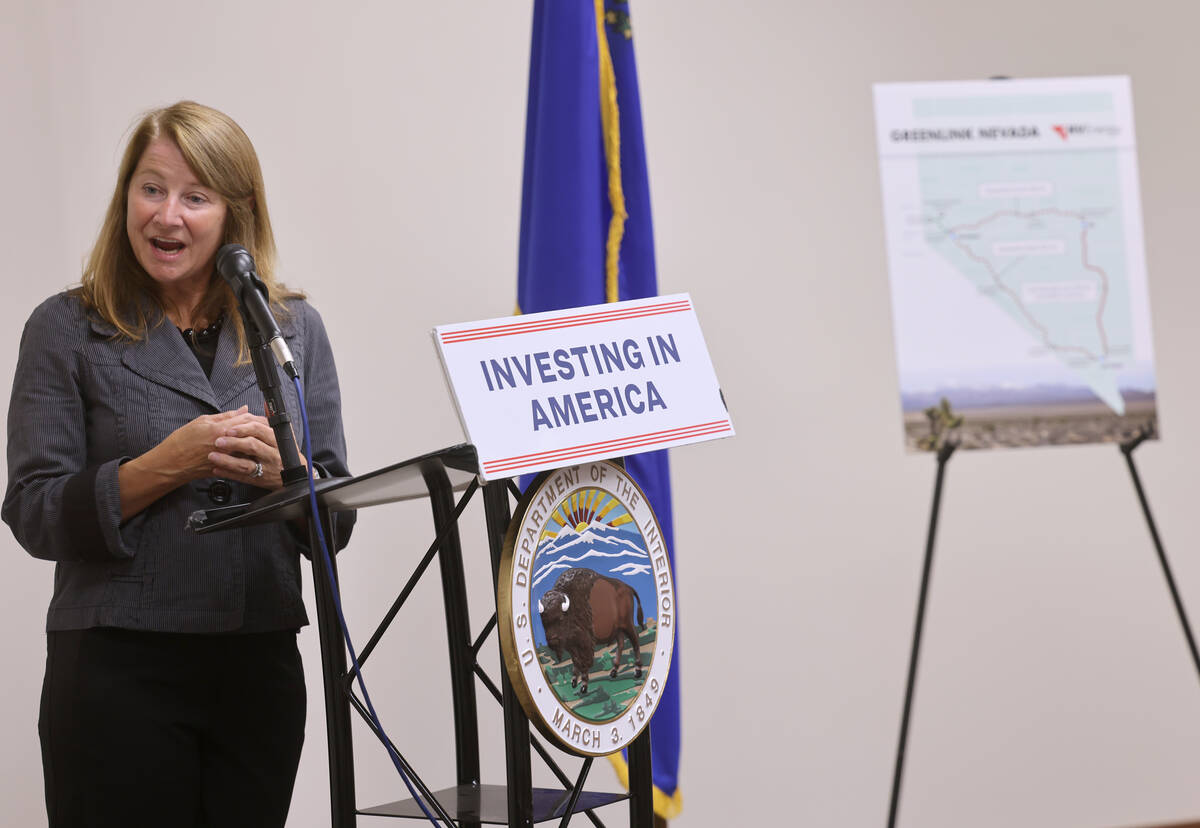Cross-Nevada energy line gets final approval
The feds gave a final green light on Monday to 472 miles of energy transmission lines that will cut through some of Nevada’s most remote desert to connect Las Vegas and Yerington.
During a news conference at NV Energy headquarters in Las Vegas, a slew of Biden-Harris and Nevada officials gathered to celebrate the progress of four green energy projects, two of which were given final approval and another two that are now accepting public comments about their draft environmental reviews.
“In Nevada, you all are really at the forefront of a transformation we’re seeing all around the country,” said Ali Zaidi, the White House’s national climate change adviser. “The clean energy revolution is made in Nevada.”
Greenlink West, NV Energy’s cross-Nevada project that was approved on Monday, is expected to be able to transmit 4,000 megawatts of energy from the desert to Nevada’s concrete jungles — enough to power 4.8 million homes. Construction will be fast; it’s expected to be in service by May 2027, officials said.
That project’s counterpart, Greenlink North, will connect the Yerington area to Ely in eastern Nevada, with an expected December 2028 completion date. Both projects are far over initial budget proposals, with the latest estimates totaling $4.2 billion.
Final approval also was granted to the Libra Solar Project in Mineral County, more than 300 miles northwest of Las Vegas, which will be the largest solar and battery energy storage project in Nevada. The Bonanza Solar Project that straddles the Clark-Nye County line is still in an environmental review phase, with the Bureau of Land Management now accepting public comments.
The news of the four projects comes just over a week after the federal agency released an overhaul of its Western Solar Plan, which could open about 12 million acres of public lands in Nevada for future solar development. New solar projects will need to be located within 15 miles of a transmission line that can move the energy generated to urban areas.
“The pace and scale of what is happening in Nevada is really nothing short of remarkable,” said Laura Daniel-Davis, acting deputy secretary of the U.S. Interior Department.
Projects remain controversial
Doug Cannon, NV Energy president and CEO, said he’s thrilled with how fast the BLM has allowed the dual Greenlink projects to progress through environmental permitting processes that are known to slow development on public lands. He thanked Gov. Joe Lombardo, too, for his support of the project.
“We’re moving forward at record speed,” Cannon said. “That is the tone that the Department of Interior wants to continue to set as we look forward to advancing these renewable energy carbon reduction projects throughout the West.”
That speed hasn’t come without scrutiny from those who aim to protect untouched desert habitat, however.
Kevin Emmerich, who leads the watchdog nonprofit Basin and Range Watch, said he remains concerned about how mass solar construction and the transmission lines stand to vastly change Nevada’s landscape and harm its natural resources.
Greenlink West is planned to cut through the new Tule Springs National Monument in Las Vegas, something that spurred criticism from conservationists who fought to see it recognized.
Nevada shouldn’t be a sacrifice zone for solar, Emmerich said, and the Interior Department isn’t conducting thorough enough reviews that consider all aspects of the environment, from fossil deposits to endangered species and water.
“They’re going way too fast, especially on transmission lines,” he said.
When asked whether there is pressure to permit green energy projects before the election in November, Daniel-Davis said the real pressing timeline is the rapid progression of climate change.
Zaidi, the national climate change adviser, said a part of that is meeting increased demand set by the Inflation Reduction Act, a green energy-boosting law on which Kamala Harris cast the deciding vote in the U.S. Senate.
“In 2024, we will add more capacity to the U.S. grid than we have in two decades,” he said. “Ninety-seven percent of that will be clean energy, and solar dominates in that deployment.”
Contact Alan Halaly at ahalaly@reviewjournal.com. Follow @AlanHalaly on X.



